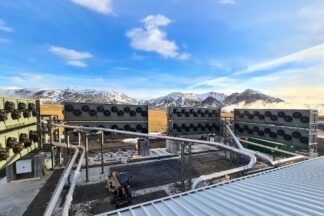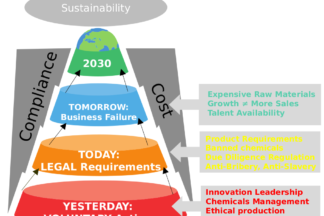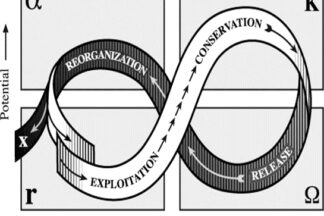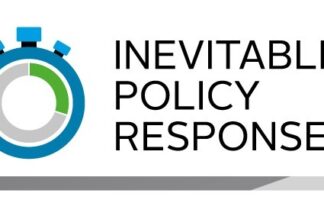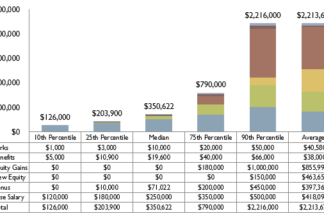As companies and countries around the world pursue net zero targets, one big question is: How do you ensure the carbon removal technologies we will need 20 to 30 years down the road are available, affordable and easily scaled?
S&P Global recently published a podcast mini-series on emerging climate technology.
The series not only introduces a range of much hyped about, CO2 saving or CO2 removing technology, but also looks at scaling, the truth of potential impact, and financial viability.It is for this reason that I would like to list the three episodes in this post – and invite everyone to spend the 3 x 20 minutes to wrap their head around these insights.
Right now everyone, everything seems to talk about wanting to be come ‘carbon neutral’.
Don’t get me wrong: The goal itself – getting to a net zero carbon balance at the very least, and all that on nothing longer than a 2040 trajectory – is a must for every business.
But.
After Circularity and Regenerative, we’re seemingly right onto the next term in the game of buzzword bingo: Net Zero.
Net Zero should be every where indeed.
But not as a mere wave to ride in order to catch the next press release headline.
How do you make ‘sustainability' tangible?
The usual answer is – unsurprisingly – a ‘well, it depends’.
Which it evidently does.
Unfortunately, good case studies are extremely rare to come across.
Hence, when I stumbled across such a gem in one of the primary Swiss news papers, I jumped at the opportunity to summarise it for this blog.
‘System positive’. The latest term I came a cross in the finance world, and which intends to identify business that are particularly well set up to survive the tribulations to be expected in the decades to come. Immediately the cynic in me asks: Another addition to the sustainability bullshit bingo?
And yet: the 5 questions proposed for scrutinising companies are very sharp, very relevant and very insightful.
They only fall short of one: Will the company thrive within or even thanks to the Doughnut Boundaries?
Over a decade ago, Simon Sinek pointedly demanded: Start with Why.
Targeted at a then rather uninspiring marketing and branding industry, 10 years on is still as valid as ever.
Just now, we need to ask businesses: Why are you bothering with investing millions, and thousands of hours into sustainability?
Often the answer will be: because we have to. An answer just as uninspiring as the sales slogans Sinek was bashing a decade ago.
Because when it comes to Sustainability: Know your genuine Why. Or don't bother.
In July 2018 Australian Billionaire James Packer resigned from 24 boards in total where he held directorships. His spokesman in a statement announced that Packer was “suffering from mental health issues” and was seeking treatment for depression. Packer is not a lone case.
Climate Anxiety can be a trigger to mental health challenges - for fear of the future and well-being of loved ones. Creating boards that are able to open up about doubts, challenges and concerns is like adding a booster gear to their functioning, reaching deep into an individuals motivation and passion. It also could add a whole new dimensions to professional discussions and help to ask harder, but equally necessary questions to the executives running the day-to-day business.
As I write this, it is late April.
And our lessons from the last few weeks in Corona lock down and the impact of the pandemic on our communities and societies, all over the world, have thrown an even harsher light onto some of the realities we either assumed as a given, or worked hard to change for years already.
And the lessons have been truly tough medicine.
The world ‘at the other end’ of the Corona tunnel could never be the same as before. It could be so much better than ever – with a real opportunity to put it on the rails that will make it the place we desire it to be.
Or: it could be same, but indeed worse place then ever. Where past misbehaviours is ignored at best, OK’ed at worse.
When will Corona 'be over'? never. There are historical moments when the future changes direction. We call them bifurcations. Or deep crises. These times are now. Matthias Horx discusses what that means concretely.
It is end of March / early April 2020 as I write this. Corona (Covid19) increases its grip onto the world. Draconian, tough policy measures are being put in place limiting people's lives ... and rattling the global economy.
Could it hall happen again in the future? And if so - in what way?
What would the Inevitable Policy response mean for the consumer goods industries? What could the effects be? This instalment of a 3-part series looks at: consumption patterns, role of consumer goods industries for economic development, population behaviours when affected by severe conditions
CEO pay is an ongoing topic. Stock options are a regular part of their pay package.
The way CEO pay packages handle stock options may foster short-termism. Or contribute to remedy it. Some thoughts.
What would the Inevitable Policy response mean for the consumer goods industries? What could the effects be? This instalment of a 3-part series looks at shifts in costing paradigms, in transportation, and in supply chain structures.
We all can see it happening before our eyes: Despite the Paris Climate Agreement to a climate trajectory of ‘well bellow’ 2 degrees (hence where the 1.5C number stems from) – the trajectory is not anywhere near that number. The Inevitable Policy Response (IPR) is the response by governments and legislators around the globe in taking action – hence enacting laws – in line with the 1.5 Degree climate goals.
As part of a workshop given at the Textile Exchange 2013 conference, we ran a small survey among workshop participants in order to find out more about their perception of and experience with Scenario Planning. Here the survey results.
At Shirahime, we have worked quite extensively over the last few months on the development of fashion industry scenarios beyond the 2020 time frame, going as far as 2045.
We mentioned for example Shell as one that used this approach to suit their own goals.
Siemens' 'Future Life' video, as presented the The Crystal in London.
A much more interesting approach, and very insightful in terms of methodology, but also how tangible the results are presented, is Siemens’ work on Future Cities
Supply chains, as a discipline of expertise, have come out of the hiding and recognise their role in reducing corporate risk. This is notably and specifically the case in fashion and textiles. At the same time, 'design' - not just in the creation room, but in all facets where it impacts the making, delivery and use of a product or service, is increasingly recognised as relevant.
n early April this year we released a report that consolidated 60 studies, from the time period 2005 to early 2013, on the behaviour, attitudes, shopping criteria of the ‘better consumer’. Over the summer, two of the source reports used for our evaluation have been updated, expanded and released in their 2013 edition with further relevant details.
On November 12 and 13, 2013 the yearly Textile Exchange conference took place in Istanbul, Turkey.
I was invited to run a workshop on Scenario Work as one of the 'Strategy' break out session on the first day. The workshop was fully booked with 25 highly interested and active participants. In 90 challenging minutes they experienced a compressed version of a Scenario Planning workshop.
The fashion industry, nearly like no other, has gone through dramatic changes in the last 20, 30 years. Indeed it finds itself in the present at a crossroad. Resource scarcity is triggering shifts in business models and supply-chains; waste is the new resource; customers are the sales channel of the future; and legislation is becoming ever more stringent. The fact though is: if looking back at predictions of the 1950 and 1960, or even earlier (physical artefacts not considered), the reality we live in compares best to the predictions that were considered ‘totally crazy’ in their time.

